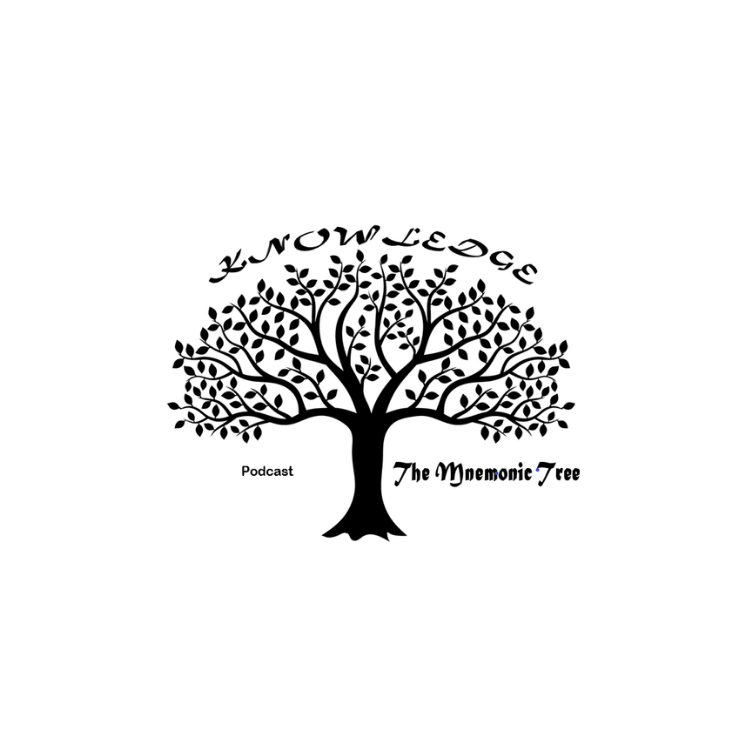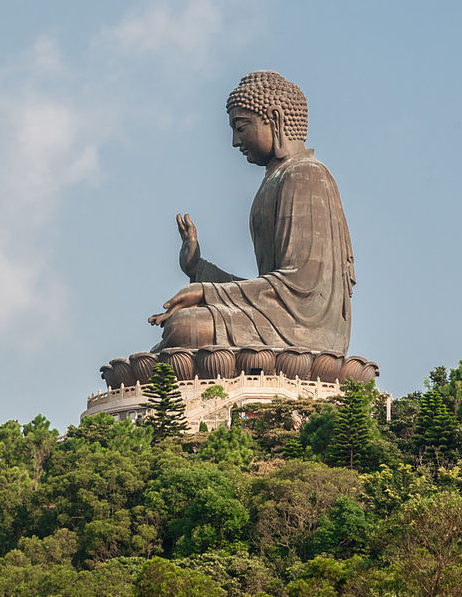Ep. 99: Buddhism – The Five Precepts Mnemonic
Intro
Hello and Welcome to this episode of the podcast, "The Mnemonic Tree", where we add a single mnemonic leaf to our Tree of Knowledge.
Today's episode is on one of the world’s main religions which is included in the “Big Four” of religions and that is Buddhism. Founded by Siddhartha Gautama who was born in Lumbini, in what is now Nepal, he attained enlightenment at Bodh Gaya (bow-d-guya) in what is now India.
As you can probably tell by my wording it is somewhat contentious as to exactly where Buddhism was founded. It is also contentious as to the dates of both, the birth and death of Buddha.
Another fact that I had been totally oblivious to was of the fact that Buddhism was an offshoot of Hinduism with its founder Siddhartha Gautama starting out as a Hindu.
Further to that Hinduism is actually the basis for seven other religions, some of which include Jainism, Sikhism and Yezidism.
Today’s mnemonic is on the five precepts of Buddhism.
So, with that being said, we will begin with a summary from Wikipedia.
Wikipedia Summary
Buddhism (/ˈbʊdɪzəm/ BUUD-ih-zəm, US also /ˈbuːd-/ BOOD-),[1][2][3] also known as Buddha Dharma, and Dharmavinaya (transl. "doctrines and disciplines"), is an Indian religion or philosophical tradition based on teachings attributed to the Buddha.[4] It originated in present-day North India as a śramaṇa–movement in the 5th century BCE, and gradually spread throughout much of Asia via the Silk Road. It is the world's fourth-largest religion,[5][6] with over 520 million followers (Buddhists) who comprise seven percent of the global population.[7][8][9]
The Buddha's central teachings emphasize the aim of attaining liberation from attachment or clinging to existence, which is said to be marked by impermanence (anitya), dissatisfaction/suffering (duḥkha), and the absence of lasting essence (anātman).[10] He endorsed the Middle Way, a path of spiritual development that avoids both extreme asceticism and hedonism. A summary of this path is expressed in the Noble Eightfold Path, a cultivation of the mind through observance of meditation and Buddhist ethics. Other widely observed practices include: monasticism; "taking refuge" in the Buddha, the dharma, and the saṅgha; and the cultivation of perfections (pāramitā).[11]
Buddhist schools vary in their interpretation of the paths to liberation (mārga) as well as the relative importance and 'canonicity' assigned to various Buddhist texts, and their specific teachings and practices.[12][13] Two major extant branches of Buddhism are generally recognized by scholars: Theravāda (lit. 'School of the Elders') and Mahāyāna (lit. 'Great Vehicle'). The Theravada tradition emphasizes the attainment of nirvāṇa (lit. 'extinguishing') as a means of transcending the individual self and ending the cycle of death and rebirth (saṃsāra),[14][15][16] while the Mahayana tradition emphasizes the Bodhisattva-ideal, in which one works for the liberation of all beings. The Buddhist canon is vast, with many different textual collections in different languages (such as Sanskrit, Pali, Tibetan, and Chinese).[17]
The Theravāda branch has a widespread following in Sri Lanka as well as in Southeast Asia, namely Myanmar, Thailand, Laos, and Cambodia. The Mahāyāna branch—which includes the traditions of Zen, Pure Land, Nichiren, Tiantai, Tendai, and Shingon—is predominantly practised in Nepal, Bhutan, China, Malaysia, Vietnam, Taiwan, Korea, and Japan. Additionally, Vajrayāna (lit. 'Indestructible Vehicle'), a body of teachings attributed to Indian adepts, may be viewed as a separate branch or tradition within Mahāyāna.[18] Tibetan Buddhism, which preserves the Vajrayāna teachings of eighth-century India, is practised in the Himalayan states as well as in Mongolia[19] and Russian Kalmykia.[20] Historically, until the early 2nd millennium, Buddhism was widely practised in the Indian subcontinent;[21][22][23] it also had a foothold to some extent elsewhere in Asia, namely Afghanistan, Turkmenistan, Uzbekistan, and Tajikistan.[24]
Extracted from: [https://en.wikipedia.org/wiki/K%C3%B6ppen_climate_classification#:~:text=The%20K%C3%B6ppen%20climate%20classification%20scheme,%2C%20and%20E%20(polar).]
Mnemonic
Buddhism – The Five Precepts Mnemonic – TUTSI
(Picture Buddha and his trusty dog Tutsi meditating on the top of Mount Everest in Nepal)
1. Abstain from Taking life
2. Abstain from Untrue speech
3. Abstain from Too much sensual pleasure
4. Abstain from Stealing
5. Abstain from Intoxicants that cloud the mind
Five Fun Facts
1. Buddhism originated in India around 2,500 years ago with their core belief reincarnation, or rebirth. They believe that human life is a cycle of suffering and rebirth unless you reach a state of enlightenment or nirvana where you can then escape the cycle forever.
2. Buddhism is the fourth most popular religion in the world with over 520 million followers which makes up approximately 7% of the world’s population which proves that reincarnation is making a comeback!
3. The Buddha according to legend is Siddhartha Gautama who was a prince, born in Lumbini which is modern day Nepal in the fifth century BC.
4. There are four main Buddhist pilgrimage sites. The first is the Mahabodhi Temple in India believed to house the Bodhi tree where the Buddha achieved enlightenment, the second Lumbini in Nepal which is the birthplace of Siddhartha, thirdly the Sarnath in India where Gautama Buddha delivered his first sermon and lastly Kusinagara where Gautama Buddha died.
5. In 1952 the World Buddhist Congress adopted the International Buddhist Flag. The colours of the stripes symbolize the colours of the aura that shone around the Buddha when he attained Enlightenment.
Now just speaking of Buddha. There was a story of a lawyer, a rabbi, and a Buddhist Monk and they are driving together down Route 66. Now it's beginning to get dark and they are hoping for a place to stop but there isn't a town for miles.
Anyway, they spot an old farmhouse and decide to ask the farmer if they can stay the night. The farmer agrees to let them stay but explained that he only had 2 extra beds, so one of them would have to sleep in the barn.
The Monk says that since his religion values self-sacrifice, that he would sleep in the barn. So, they all went off to bed, then five minutes later there was a tap on the door. The farmer opened the door and there stood the Monk who said "I can't do it, there's a cow in there, and cows are sacred."
With a sigh the rabbi put his hand up and said that he would sleep in the barn. So, they all go off to bed again and 10 minutes later there's a knock on the door and there stands the rabbi who says. "I can’t do it. There's a pig in the barn, and pigs are unclean."
After a bit of nudging the lawyer finally begrudgingly says "this is just insane, I'll sleep in barn. I'll see you all in the morning." Anyway, 3 minutes later there is the sound of heavy running footsteps on the porch and the door is struck open with a booming crash with the door being torn from the hinges.
There stands the pig and the cow!
Three Question Quiz
Q.1. What does Buddha mean? Options are “The awakened one” or “The reincarnated one”
Q.2. What sort of tree did Buddha or Siddhartha Gautama achieve enlightenment under? Options are Palm tree, Joshua tree or the Bodhi tree
Q.3. The word Dharma is mentioned often in Buddhism and is symbolised by a wheel. What is Dharma? Options are reincarnation, code of conduct or the collective teachings of the Buddha
Bonus Q. The Buddha taught that everything in the physical world shares certain characteristics that he called the "Three Marks of Existence". What are they? Options are life, death and the afterlife or Impermanence, suffering and egolessness.
Bonus Q. The four noble truths refer to what? Options are suffering or reincarnation
Mnemonic Recap
Buddhism – The Five Precepts Mnemonic – TUTSI
(Picture Buddha and his trusty dog Tutsi meditating on the top of Mount Everest in Nepal)
1. Abstain from Taking life
2. Abstain from Untrue speech
3. Abstain from Too much sensual pleasure
4. Abstain from Stealing
5. Abstain from Intoxicants that cloud the mind
Three Question Quiz Answers
Q.1. What does Buddha mean? Options are “The awakened one” or “The reincarnated one”
A. The awakened one
Q.2. What sort of tree did Buddha or Siddhartha Gautama achieve enlightenment under? Options are Palm tree, Joshua tree or the Bodhi tree
A. Bodhi tree which is a fig tree (Ficus religiosa)
Q.3. The word Dharma is mentioned often in Buddhism and is symbolised by a wheel. What is Dharma? Options are reincarnation, code of conduct, or the collective teachings of the Buddha
A. The collective teachings of the Buddha
Bonus Q. The Buddha taught that everything in the physical world shares certain characteristics that he called the "Three Marks of Existence". What are they? Options are life, death, and the afterlife or Impermanence, suffering, and egolessness.
A. Impermanence, suffering, and egolessness
Bonus Q. The four noble truths refer to what? Options are suffering or reincarnation
A. Suffering. The Four Noble Truths are:
The truth of suffering
The truth of the cause of suffering
The truth of the cessation of suffering
The truth of the path to the cessation of suffering
Word of the Week
syncope
[ sing-kuh-pee ]
noun
the medical term for fainting.
Example
Siddhartha Gautama was dangerously close to syncope due to his practice of extreme fasting.
Extracted from: [https://www.dictionary.com/]
https://www.themnemonictreepodcast.com/
https://podcasts.apple.com/au/podcast/the-mnemonic-tree-podcast/id1591795132
https://open.spotify.com/show/3T0LdIJ9PBQMXM3cdKd42Q?si=fqmaN2TNS8qqc7jOEVa-Cw
References
https://planbee.com/blogs/news/facts-about-buddhism



